Dennis Bill’s Family History





Skeletons
On this page are just a few of the interesting stories that I have uncovered during my researchThe Lure of the Cod - Newfoundland Wisemans NEW
The Quebec Connection - Canadian Wisemans
Boy Overboard - the story of young Frank WISEMAN
Regina versus John WISEMAN
The Vanishing Blindmaker
The Naughty Ladies of Malta
The Will of John BENNETT of Tollard Royal (1692-1746)
James Bennett and King John’s House
The Crinoline Church
The Marksman Gene
Celebrity Alert! - The Redgraves
The Lure of the Cod
NEW
In my last update I mentioned a recently found link to Newfoundland. Subsequent research has proven a direct link to a James Wiseman (1789-1874) who was just one of many Ringwood-ians who sought a new live as a planter through the cod fishing trade that operated out of Poole, Dorset, just 15 miles from Ringwood. Poole was one of the major south coast ports for the cod trade and the towns traders and merchants grew weathy on it, as is shown in its fine Georgian buildings. These traders recruited seaman, planters and servants from across the New Forest and Dorset. James left Ringwood when he was about 18 and settled in Heart’s Delight on the east coast of Trinity Bay, where he lived for over 65 years until his death in 1874. We know from his will that he had two sons, James and William but there is no positive record of his marriage. There are many other Wisemans in the fragmented records but none others that I have been able to link to Ringwood as yet. There is a probate record in Hampshire Archives for a Jonathon Wiseman who died in 1729 and is described as a ‘marriner’, as this was the peak period for the Poole trade it is likely that he was part of it too. This Ringwood- Newfoundland connection could also be the route that James’ uncle, another James (1756-1809) who appears in Quebec in 1783, took to North America - see below.The Quebec Connection - Canadian Wisemans
In 2008 I was contacted by Rino Durette, a Canadian who was researching the Wiseman family for a friend. He asked if I had a connection to the Phillipe Wiseman who was lost on the Titanic. He was alleged to be British and living in London but his ancestor had been a Jacques Wiseman whose parents were Phillipe and Genevieve Wiseman from “Ringward, Hanshire”. I must confess I did not look into this too deeply despite the obvious Ringwood connection (apologies if you’re out there Rino). At the time I was concentrating on tracing the Wisemans in my direct line and this seemed to be a distraction. Not only that but he said that Phillipe had been resident in London and to my knowledge none of my Wisemans had moved there. A couple of years later Darlene Leat, another Canadian, contacted me. Darlene is a distant relation, a Mary Leat having married Stephen Witt (my 3xgreat-grandfather) in Ringwood in 1813. Initially I did a little research for her but then just before Christmas 2014 she asked me if I could find anything about an Ezekiel Cole who was born in Hampshire and was at one time a member of the North Hants Militia Volunteers. I checked the available muster rolls but with no success. Then she told me that at one point he had been lodging in Quebec with the family of a Jacques Wiseman. Thinking that they might be related she did a little research and found a marriage register entry for Jacques and Madeleine Delisle dated 16 Sep 1783. He was recorded as the legitimate son of Phillipe and Genevieve Wiseman of Ringward, Hanshire – the same entry that Rino had told me about some years earlier. But Darlene was able to help me further by pointing-out that Jacques would be a translation of James and Genevieve of Jane. Bingo!! Hanging on my tree was a James Wiseman, baptised at Ringwood on 9 Jun 1756, but with no other information found, no marriage or burial, and his father was Philip. A quick search of the Hants Genealogical Society marriage index showed that Philip Wiseman had married a Jane Pool in Milford on 17 Nov 1745. When I began to research the Canadian records it was too good to be true, all the Quebec Catholic Church records and Quebec Parish Censuses were available online, scanned and fully searchable. My main sources have been: • Quebec, Vital and Church records (Drouin Collection - Bibliothèque et Archive Nationales Du Quebec, BAnQ) • Dictionnaire généalogique des familles canadiennes (Tanguay Collection - Library & Archives, Canada) • Parish censuses of Notre-Dame-de-Quebec (Bibliothèque et Archive Nationales Du Quebec, BAnQ) The first two are available on Ancestry the third on the BAnQ web site. It is from these records that much of this story has been built. So we know that James Wiseman was born in Ringwood in 1756 and from the 1795 parish census in Quebec we also know that by this time he was a “charpentier de navire” or shipwright. However, in the 1805 census he is referred to as simply “charpentier” or carpenter. He died in 1809 and there appear to be no other references to his occupation available. So was he a shipwright or a carpenter? If he was a carpenter then he could have served his apprenticeship in Ringwood and then emigrated after he had completed his indenture. He could also have been apprenticed as a shipwright at Buckler’s Hard shipyard, near Beaulieu and about 15 miles from Ringwood or possibly he got there via the Royal Navy who employed civilian shipwrights at this time. But after finding Ringwood Wisemans in Newfoudland - see my Research page - the most likely scenario is that he trained in the shipyards connected to the large cod fishing industry operating out of Poole, about 13 miles from Ringwood, and perhaps travelled to Quebec via Newfoundland. It was from that marriage between James “Jacques” Wiseman and Madeleine Delisle in 1783 that an extensive branch of Wisemans developed, all French Canadians. One point to note is that three of James’s sons and two of his grandsons were also carpenters. After adding 143 members of this extended family into my database I had to stop; but I know there are many more to find and link-in when I have more time to devote to them. I didn’t stop, however, until I had proven to my own satisfaction that the Wiseman link to the RMS Titanic could be substantiated. James and Madeleine had seven children; child number four was named after James’ father, Phillipe. Phillipe married Marie-Julie MEYER in 1810 and they had two children, the eldest, born in 1810 was another Phillipe. This Phillipe married Marie REILLY in 1831 and they had two children, the eldest being George Phillipe born in 1834. George Phillipe’s first marriage to Mathilde RODRIGUE produced three children, the eldest being Elzear Phillipe, born 1858. Elzear Phillipe WISEMAN married Emmelie DUPUIS in 1882 and eight children followed between 1884 and 1892. Emmelie died in Feb 1895 and Phillipe re- married in Sep 1896 to Marie NOREAU; seven children followed, the last born in 1906. In the 1891 census Phillipe is recorded as a “Libraire” or bookseller. Evidence of this is provided by the International Directory of Booksellers, and Bibliophiles Manual published in London in 1899. It shows Phillipe in partnership with a man called Forgues trading as Forgues & Wiseman. There is also evidence that the pair had another branch in Montreal. The Bibliotheque de L’Universtie Laval has a page on them (http://www.bibl.ulaval.ca/ress/manscol/editeurs/editeursf_forgues_wiseman.html) and one of the books that they published in 1891 can be read online – (Catechism of hygiene for the use of convents and female schools - http://eco.canadiana.ca/view/oocihm.55641/1?r=0&s=1). In the 1911 census Phillipe is recorded as a stationary contractor, although something may be lost in the translation. Interestingly he is recorded at 154, Rue Stigmates with four of his children from Emmelie, whereas Marie is recorded at 164, Rue Margarite, less than half a mile away, with three of her children with Phillipe and two from her first marriage – hmm! As this census was conducted on 1 June it appears that his trip to Europe was a comparatively short one. There is no surviving evidence on-line of his passage to Europe, but some confusing evidence of his loss on the Titanic. The Board of Trade – Outward Passenger Lists – Southampton: Titanic – records him with the British passengers as “Philip”, merchant, age 54. The occupation and age are correct but how he came to be listed as a British passenger is unclear. More confusingly it is recorded that his “Country of last Permanent Residence” was England, with Canada as his intended future permanent residence, but this must be a mis-recording. This information is repeated in the subsequent “Register of Deceased Passengers” drawn-up in June 1912, two months after the disaster. Elsewhere it is recorded that his ticket number was 34244 and he paid the princely sum of £7 5s (£7.25) for his 3rd class ticket. There were 1514 people lost in the sinking and he was one of the 1181 whose bodies were never recovered. There must be some oral history passed down the subsequent generations that could throw more light on this story and I would be interested to hear from French Canadian Wiseman ‘cousins’, judging by the skeleton tree that I have created so far there must be a considerable number of them. Board of Trade - Outward Passenger List reproduced with kind permission of The National Archives, ref: BT334/52/814 back to topBoy Overboard - the story of young Frank Wiseman
When the late Denise HOFFMEISTER (nee WISEMAN) contacted me through this web site she told me of a story handed down in her family about a WISEMAN coming to a sticky end whilst serving on HMS Victory. According to her family legend he was murdered in an argument over a card game and his body thrown overboard. I must admit I was sceptical, it sounded like one of those stories that circulate in families with the object of linking them to famous people, places or events, like the one my mother used to tell of her Uncle Charlie claiming we were all related to Cardinal WISEMAN. After considerable digging at The National Archives, I must admit there was a story but the full truth remains elusive. The following story comes from the official sources and newspaper reports. Frank Wiseman (born 1888) had been working as a Milk Boy when, on 2 Jun 1905 shortly after his seventeenth birthday, he enlisted in the Royal Navy and started as a Boy Domestic 3rd Class on HMS Victory. At the time HMS Victory was a barrack ship permanently moored in Portsmouth Harbour. On the morning of 5 March 1906 Frank had just returned to the ship after a spot of leave and was at his post by seven o'clock. The peace aboard the ship was soon broken by some Dockyard workers who began rivetting on the upper deck and making a terrible din. At eight-thirty Frank served the officer's breakfast and went back to the galley to fetch the coffee. By eight-forty the officers were getting restless for their coffee and the senior officer, Chief Gunner Henry BERRY, asked Frank's colleague Henry CANSDALE why the coffee had not been served. CANSDALE went off in search of Frank but he was not to be found. BERRY ordered a search of all decks and when the result was negative he sent Chief Gunner DELANEY in a dingy to search around the ship. When this also proved negative two steam launches were sent to search the harbour. With no result from these searches Frank's disappearance was reported and within three days a Navy Court of Inquiry had been instigated. This was convened on 10 March. It was established that no boats, other than that bringing the officers aboard, had come to or left the ship, so there was no way that Frank could have 'jumped ship'. Frank's inquisitiveness was noted along with his being short-sighted and the fact that he often climbed into the pantry port (window) to get a better view of what was going on in the Harbour. On the day of Frank's disappearance the Irish merchant steamer, SS Lady Kinahan, was moored just 100 yards from HMS Victory and at the time when Frank was serving breakfast she was making steam and preparing to get underway. This must have been too much of a temptation for Frank and he went into the pantry and climbed into the port so that he could get a better view of what was going on, perhaps forgetting for the moment that the officers would shortly be waiting for their coffee. What happened next no one really knows but somehow he must have slipped and fell into the water. Like many of his fellow sailors, he was unable to swim and must have cried-out and struggled to keep himself afloat but, with the noise of the riveters, neither the Corporal or Signalman of the Watch nor a marine who was cleaning a dingy on deck heard his cries. The Court found that Frank had fallen from the pantry port and had drowned. In the first week of May 1906 a body was found floating off the Sussex coast near Goring. The body was headless and the hands were missing. The only possible identification was the name 'F. Wiseman' that was written inside the jacket. The local surgeon stated that the body was of a full-grown man and that, due to the badly decomposed state, it must have been in the water for some weeks. In the circumstances he could not say if death was due to drowning. At a subsequent Coroner's Inquiry the jury found a verdict of "Found dead in the sea". Following a report in the Worthing Gazette, Frank's grandfather wrote to the Goring police to claim the body as his grandson. According to Frank's Navy Service Record he was then buried in St Margaret's, the Goring parish church, on 6 Jun 1906 but I have been unable to get confirmation of this from the church. So what about the murder story? There is nothing in the official records that shows that this was possible unless there was collusion and a cover- up, perhaps between the cook, Private Cox, and Frank's colleague Henry Cansdale. But to dispose of a body through the port in broad daylight was a very risky strategy, any number of people on HMS Victory or other adjacent ships could have seen it. And how did his family learn about the body at Goring, it wasn't reported in the Portsmouth press? Some things we shall never know. Newspaper extracts by kind permission of the Worthing Herald back to topRegina versus John Wiseman
This is a document I found in The Morant Family Papers at Hampshire Record Office. It is the official manor court record of the trial of John WISEMAN (1800-1882), my great great grandfather, for salmon poaching. The trial was held at the Crown Inn, Ringwood on 26 January 1857. The long hand-written record includes evidence given by Thomas HURDLE, Morant's water bailiff, and his son Thomas James. In his defence John Wiseman claimed that he was after a jack (pike) not a salmon. After hearing the lengthy but inconclusive evidence the magistrate, W C D ESDAIL Esq., declared that John WISEMAN was "innocent, but morally guilty" !! back to topThe Vanishing Blindmaker
My great aunt, Annie Georgina WISEMAN, married James George MILLS on 31 August 1890. Between then and 1903 they had four children, but one morning in 1904 James George left home as usual to pursue his work as a blindmaker but was never seen again, leaving Annie pregnant with a fifth child. After seven years he was officially declared dead and Annie Georgina subsequently married a second time to Joseph FOSTER (see the Gun-running story below), having a further two children by him. To her dying day she never knew what happened to her first husband. I hope to find time to investigate what might have become of him including a search of emigration records to see if he left the country, but if you recognise his photo please contact me! back to topThe Naughty Ladies of Malta
My paternal great grandfather was James BILL. He was born in 1848 and after leaving school he worked as a flax dresser in the once famous Belfast linen industry. Presumably it was the lure of adventure and a better life that made him enlist in the Army. He joined the 28th Regiment of Foot (aka North Gloucester Regiment) on 15 June 1868 and within six months was in Gibraltar, followed by spells in Malta, Strait Settlements (Singapore) and Hong Kong. He did not return to Irish soil until 1879, a ten-year odyssey that must have been quite an adventure for a young Belfast lad. He certainly furthered his 'education' whilst in Malta as his medical records show that he spent 48 days in the sick bay with gonorrhoea!! No doubt the result of one visit too many to Straight Street (also known as The Gut), Valetta's infamous red-light district. back to topThe Will of John Bennett of Tollard Royal (1692-1746)
John Bennett is my maternal g-g-g-g-g-g-grandfather and I found his will in the Wiltshire and Swindon Record Office at Trowbridge (now the Wiltshire & Swindon History Centre, Chippenham). There is actually a package of documents that includes not only the will itself but also probate documents, inventories and accounts. These papers have a number of interesting points including the lovely archaic preamble to the will in which he states that he is "very sick and weak of body but of perfect mind and memory". His executor is his youngest son, Thomas, who was only 15 at the time and so wife Mary and eldest son John are appointed as trustees. Amazingly they have to stand one thousand pounds surety to The Archdeacon until Thomas comes of age, a huge sum of money in 1746. But what really brings the will to life are the inventories of the farm and farmhouse. These detail all the livestock and equipment and also "Goods within doors" down to the clock, looking glass and saucepans. A tablecloth and “half dozen of napkins” were valued at 10s 6d (52p) and two dozen chairs at £1 16s 0d (£1.80) with the total, indoors and out including crops and livestock, being valued at £415 3s 6d. Will images by kind permission of Wiltshire & Swindon History Centre back to topJames Bennett and King John’s House
John Bennett’s son, James Bennett (1759-1838) was also a prominent farmer in Tollard Royal. I was lucky to find extensive estate papers in the Wilts & Swindon History Centre that were produced about 1818 when the estate was sold as a result of the bancruptcy of Henry 4th Lord Arundell. These papers indicated that James Bennett was the tenant of the most prominent farm in the village, known as Higher Farm. When I related the estate map to a modern Ordnance Survey map it indicated that Higher Farm was now called King John’s House and was an antiquity. The estate had been purchased by Lord Rivers but by a great stroke of fortune the estate eventually passed to Lieut General Augustus Henry Lane Fox Pitt in 1880. General Pitt just happened to be one of the great Victorians and is known as the father of modern archaeology. As a mark of respect he took on the name Pitt Rivers and is mostly now known for his bequest of his collections and money to found the world-renowned Pitt-Rivers Museum at Oxford University. When Pitt-Rivers moved to Tollard Royal he immediately became aware of the legend about Higher Farm originally being a hunting lodge built for King John. He set to work excavating the house and discovered that what appeared to be an Elizabethan house had actually been built around a much earlier 12th century tower house. There was nothing to link the house directly to King John but it was certainly of his time. Pitt-Rivers privately published his findings in a book that contains some marvellous drawings of the house and interior. James Bennett took on a fifteen year lease of the farm in 1816 which came with over 400 acres of arable and grazing land. As he is not mentioned anywhere in the estate survey I suspect that James’ son, also James (1879-1839) and his family were also living in the house. He was shown as a farm labourer in the baptism records of his children at this time and as he doesn’t appear to have been renting any other property in the village this seems the most likely scenario. So two generations of my ancestors lived in this great house, although it wasn’t in such good condition in their time. The house has recently been refurbished and is now available for rent, sleeping 10 adults with the Butlers House providing and extra 4 beds. See pictures of the lavish interior and gardens at https://www.rushmoreuk.com/king-johns- house/ back to topThe Crinoline Church
Please see the page dedicated to my book about the Royal Marine Artillery Church at Eastney Barracks, Portsmouth, here back to topThe Marksman Gene
When I first started work at Ordnance Survey in 1962 I was befriended by John Pitt, the son of a work colleague of my father. We met on the train on my first morning, John having started three months before me. John was interested in rifle shooting and when he found that Ordnance Survey had its own rifle club and indoor range he persuaded me to join with him. I began to shoot in the Southampton small-bore league and then later joined Fareham Rifle Club, being near my home. I shot for them for several seasons in the Portsmouth league before I found that the strain of the close work I was engaged in at Ordnance Survey was having an effect on my 'evening eyesight' and so gave it up, supposedly temporarily but I was never to return to it. During these years my brother, who was in the RAF, was also introduced to the sport by our cousin who was a member of the MG rifle club in Abingdon, Berks. My brother went on to shoot in RAF competitions and the two of us took part in the Bisley week championships on several occassions - I still have the badges! Some 40 years on when I started to research my family history I was lucky to find my grandfather's army records at The National Archives in Kew. This supplied me with a lot of information about his life that I didn't know - he and my father had become estranged after the death of my father's mother and grandfather's subsequent remarriage. This meant that I knew very little about grandfather although I did know him vaguely when a child. His army records show that he joined the Leinster Regiment (Prince of Wales' Royal Canadian Leinster Regiment) in Birr, County Offally, Ireland, in 1899. In June 1905 he qualified at the School of Musketry in Hythe, Kent and was subsequently promoted to sergeant. He returned to Hythe to qualify in advanced musketry in 1908 and eventually became Colour Sergeant Instructor of Musketry to the end of his 21 years service. Quite a coincidence.Celebrity Alert! - The Redgraves
The more alert amongst you may have noticed, whilst scanning the O - Wa page of my Family Tree list, the appearance of a Michael Redgrave. I should explain the tenuous thread that allows me to include such an illustrious family in my tree. My mother’s eldest sister Annie married a Percy Graham WATERS. Percy had a sister Gladys who married Arthur Scudamore BLANCHARD in 1928. Arthur was the son of Ernest J S BLANCHARD and Clara Annie SCUDAMORE. Clara’s sister Daisy SCUDAMORE was in the theatre and had an illegitimate child with a Roy Redgrave - Michael REDGRAVE who was born in 1908. Roy REDGRAVE abandoned her and went to Australia and she continued her stage and film career as Margaret SCUDAMORE. Her son Michael REDGRAVE married Rachel KEMPSON in 1935 and the rest is entertainment history. back to top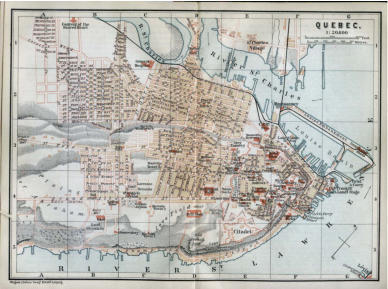

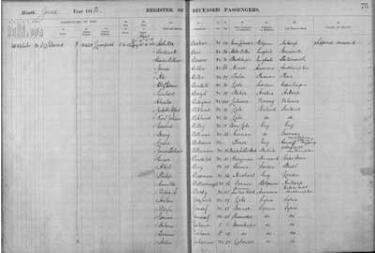

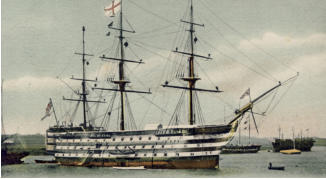
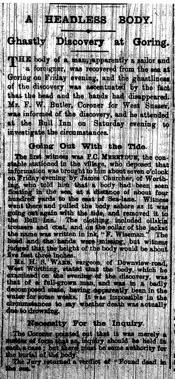

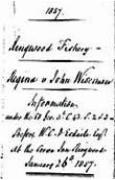
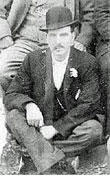

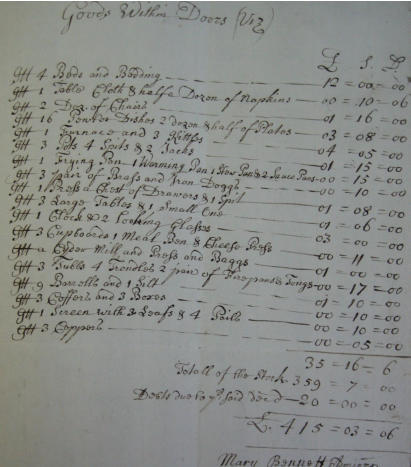

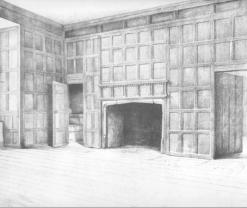


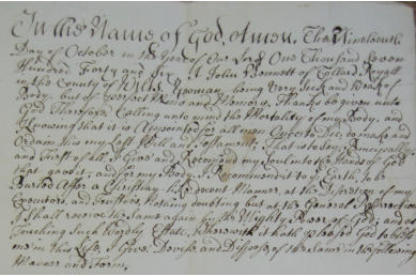
NEW














